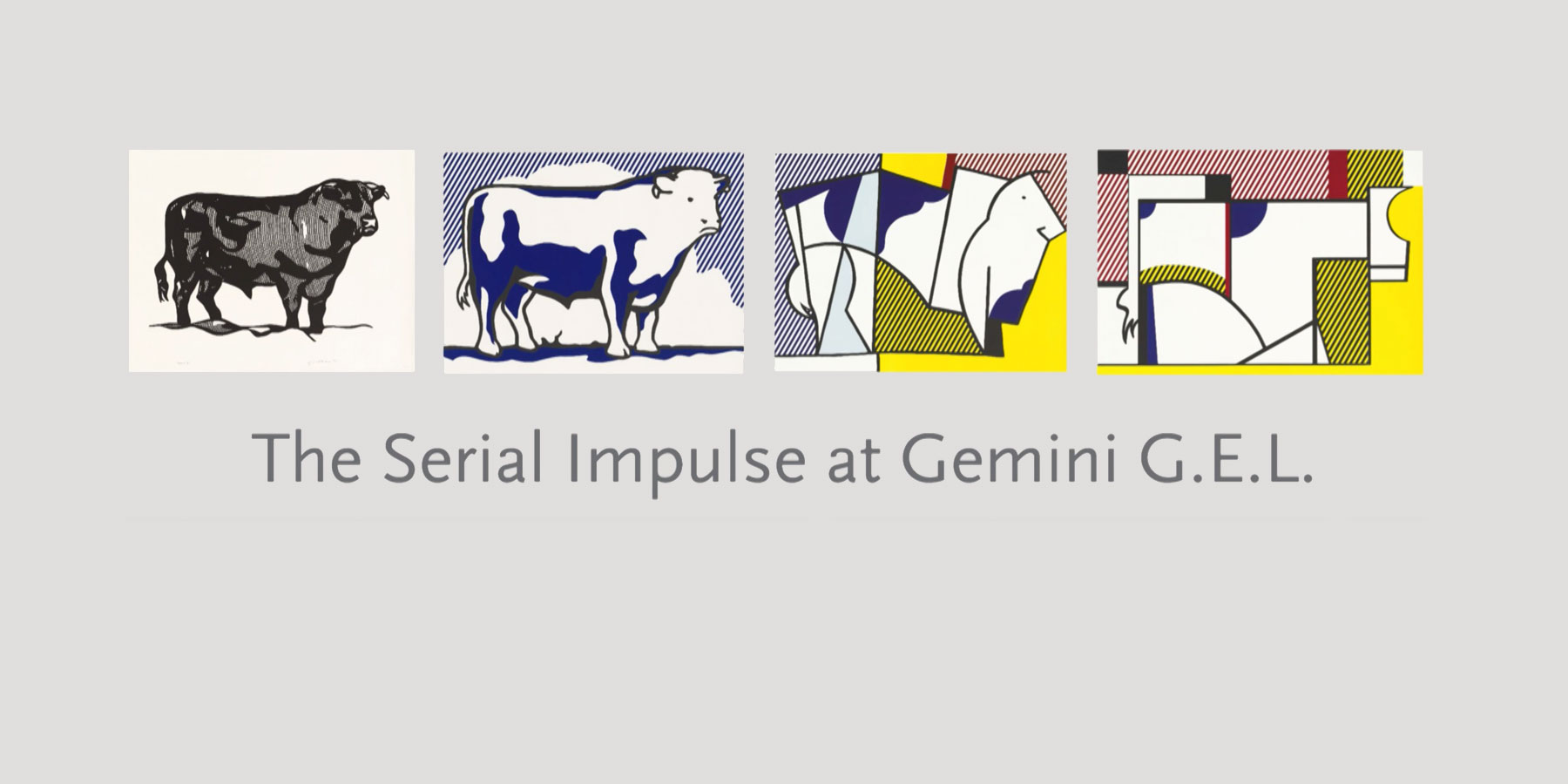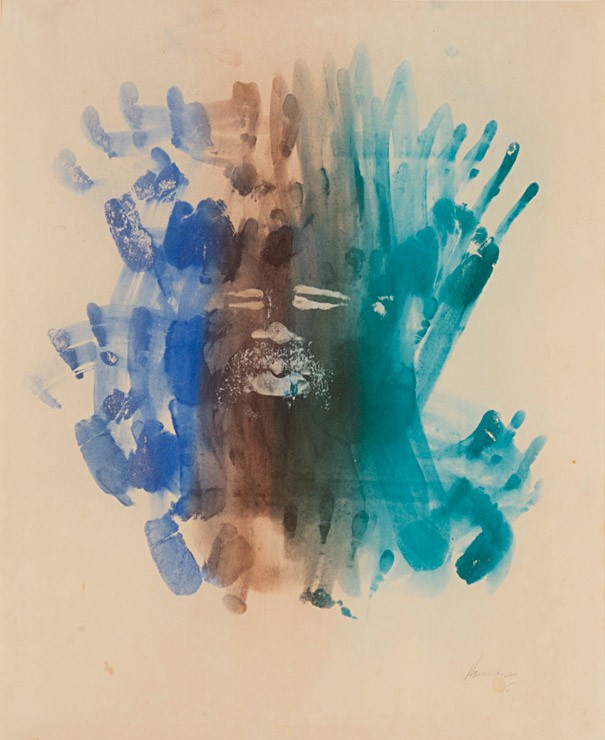Bilaterally symmetrical and vaguely cruciform, the distribution of calligraphic marks, daubs, and sprays in the first panel of Myriads, Only by Dark resembles a splayed and messily dissected human body. Subtitled (unfolded body map), the anthropomorphic form drips rivulets of grey ink and is bracketed by handprints that recall prehistoric cave paintings or artwork by David Hammons. In the second print, the mass disperses into myriad feathery gestures and staccato marks. Its subtitle, (mathematics of droves), calls to mind population and migration statistics. In the third and fourth prints, skeins of calligraphic strokes appear to coalesce around a nebulous chasm that eventually resolves into a colorfully tinged rhombus. The subtitles, (indigene) and (origin), connote ancestral and geographic roots. Invoking anatomy, cartography, and history, Julie Mehretu (American, born Ethiopia, 1970) imagines identity as a blend of individuality, collectivity, past, and present.
Mehretu originally conceived of Myriads as four autonomous prints, but later decided that they should be seen together as a single, four-panel work. Proceeding from left to right, Myriads offers a visual analogue to something Mehretu terms “self-ethnography,” a systematic untangling of the effects of history, heritage, and geography on the formation of personal identity. Mehretu is well known for her large, densely-packed paintings built up with layers of geographical, meteorological, and architectural diagrams, maps, and graphs. Handprints, which are visible in three of the four panels in Myriads, are new to her work. Appearing throughout the history of art, they signal the presence and individuality of a work’s creator. For example, David Hammons’s body prints (which Mehretu cites as a precedent), imprint the artist’s black, male body—and, by extension, all of its contingent experiences—at the center of his work. Mehretu does something of the same, impressing her palms and invoking her body as the site in which lineages, origins, and statistical patterns of population and migration converge.
Link to Julie Mehretu's Diamonstein-Spielvogel Lecture, 2013






